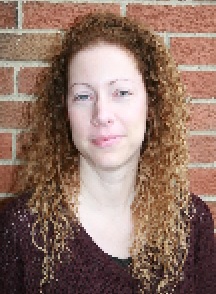Along with our partner, the Hearing Health Foundation, we are excited to announce our Emerging Research Grants for 2017. These grants demonstrate our continued commitment to uncover the mechanisms associated with hyperacusis on our path to a cure. We are extremely grateful for our donor support which makes these two grants possible. Below is a full description of each research project:
 Jennifer Resnik, Ph.D.
Jennifer Resnik, Ph.D.
Massachusetts Eye and Ear, Harvard Medical School
Homeostatic modifications in cortical GABA circuits enable states of hyperexcitability and reduced sound level tolerance after auditory nerve degeneration
Homeostatic modifications in cortical GABA circuits enable states of hyperexcitability and reduced sound level tolerance after auditory nerve degeneration. Sensorineural hearing loss due to noise exposure, aging, ototoxic drugs, or certain diseases reduce the neural activity transmitted from the cochlea to the central auditory system. Hearing loss often gives rise to hyperacusis, an auditory hypersensitivity disorder in which low- to moderate-intensity sounds are perceived as intolerably loud or even painful. Previously thought as originating in the damaged ear, hyperacusis is emerging as a complex disorder. While it can be triggered by a peripheral injury, it develops from a maladaptation of the central auditory system to the peripheral dysfunction. My research will test the hypothesis that the recovery of sound detection and speech comprehension may cause an overcompensation that leads to an increase in sound sensitivity and reduced tolerance to moderately loud sounds.
This hypothesis will be tested using a combination of chronic single unit recordings, operant behavioral methods and optogenetic interrogation of specific sub-classes of cortical interneurons. By understanding how brain plasticity is modulated, we will gain deeper insight into the neuronal mechanism underlying aberrant sound processing and its potential reversal.
Long-Term Goal: To better understand the paradoxical role of central auditory system plasticity as both the cause of—and treatment for—the perceptual consequences of hearing loss. A major step to reach this goal is to understand the compensatory mechanisms, following cochlear damage, that allow for basic sound recovery while potentially introducing hypersensitivity and causing chronic sensory impairments such as hyperacusis.
For reference, see this recently published article in Neuron “Central Gain Restores Auditory Processing following Near-Complete Cochlear Denervation.”
Jennifer Resnik, Ph.D., received a doctorate in neuroscience from the Weizmann Institute of Science in Israel. She is currently a postdoctoral research fellow at Massachusetts Eye and Ear, Harvard Medical School, in the lab of Daniel B. Polley, Ph.D, studying the mechanisms and clinical implications of auditory brain plasticity.
 Senthilvelan Manohar, Ph.D.
Senthilvelan Manohar, Ph.D.
University at Buffalo
Behavioral Model of Loudness Intolerance
High-level noise causes discomfort for typical-hearing individuals. However, following cochlear damage, even moderate-level noise can become intolerable and painful, a condition known as hyperacusis.
One of the critical requirements for understanding and finding a cure for hyperacusis is the development of animal models. I have developed two new animal behavior models to study the pain and annoyance components of hyperacusis. The Active Sound Avoidance Paradigm (ASAP) uses a mouse’s innate aversion to a light open area and preference for a dark enclosed box. In the presence of intense noise, the animal shifts its preference to the light area. The Auditory Nociception Test (ANT) is based on a traditional pain threshold assessment. Although animals show an elevated pain threshold in the presence of 90 and 100 dB, at 110 and 115 dB they show a reduced pain tolerance. Using these two tests together will allow me to assess emotional reactions to sound as well as the neural interactions between auditory perception and pain sensation.
Long-Term Goal: To develop and establish a reliable behavioral model to understand the pain and annoyance aspects of hyperacusis and to use these behavioral models to identify the neural and molecular mechanisms underlying hyperacusis and tinnitus.
Senthilvelan Manohar, Ph.D., received a doctorate in stress physiology at Madras University, India. As a postdoctoral fellow at the University at Buffalo, he studies hyperacusis, noise-induced pain, and sound aversion.


I am a patient of Mass eye and ear; I had acoustic neurons removed and have hyperacusis. I would love to be part of study. My name is Terri-Lynn Dunbar
You may call me at 401.477.6119.
Thank you.
Thank you so much for finding a cure for hyperacusis.
Thank you for your efforts!